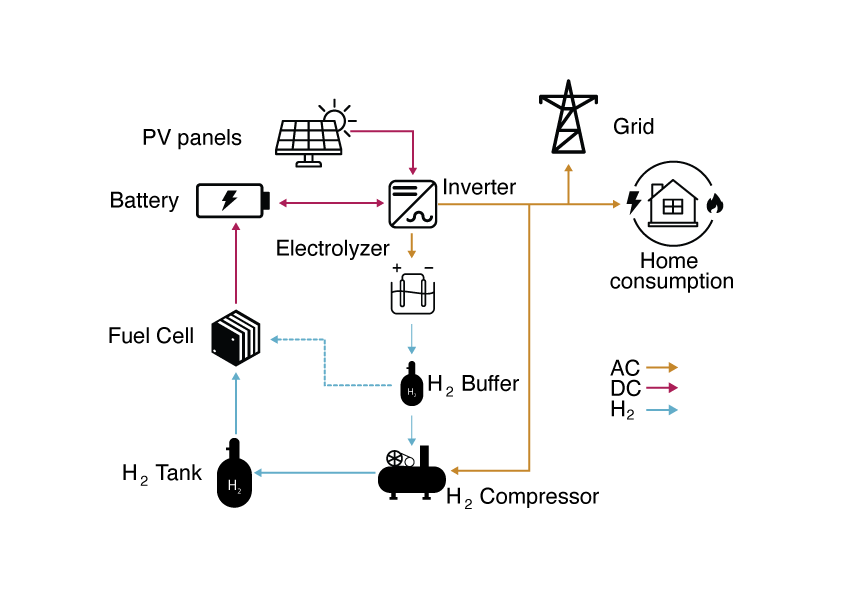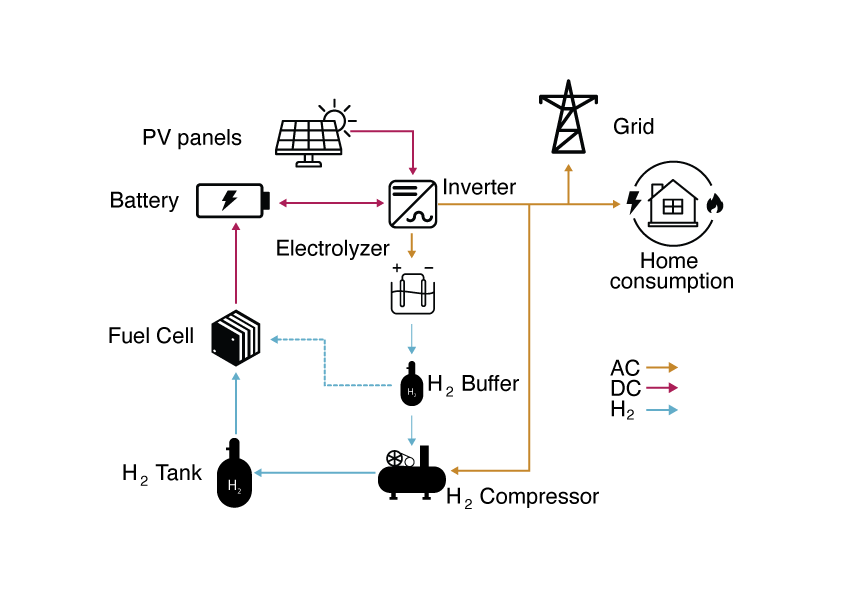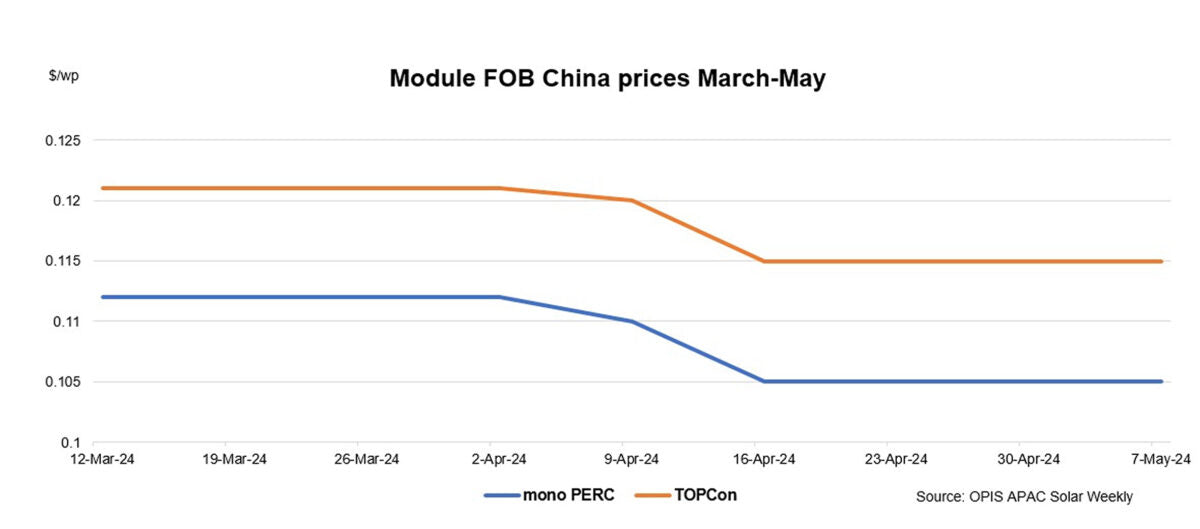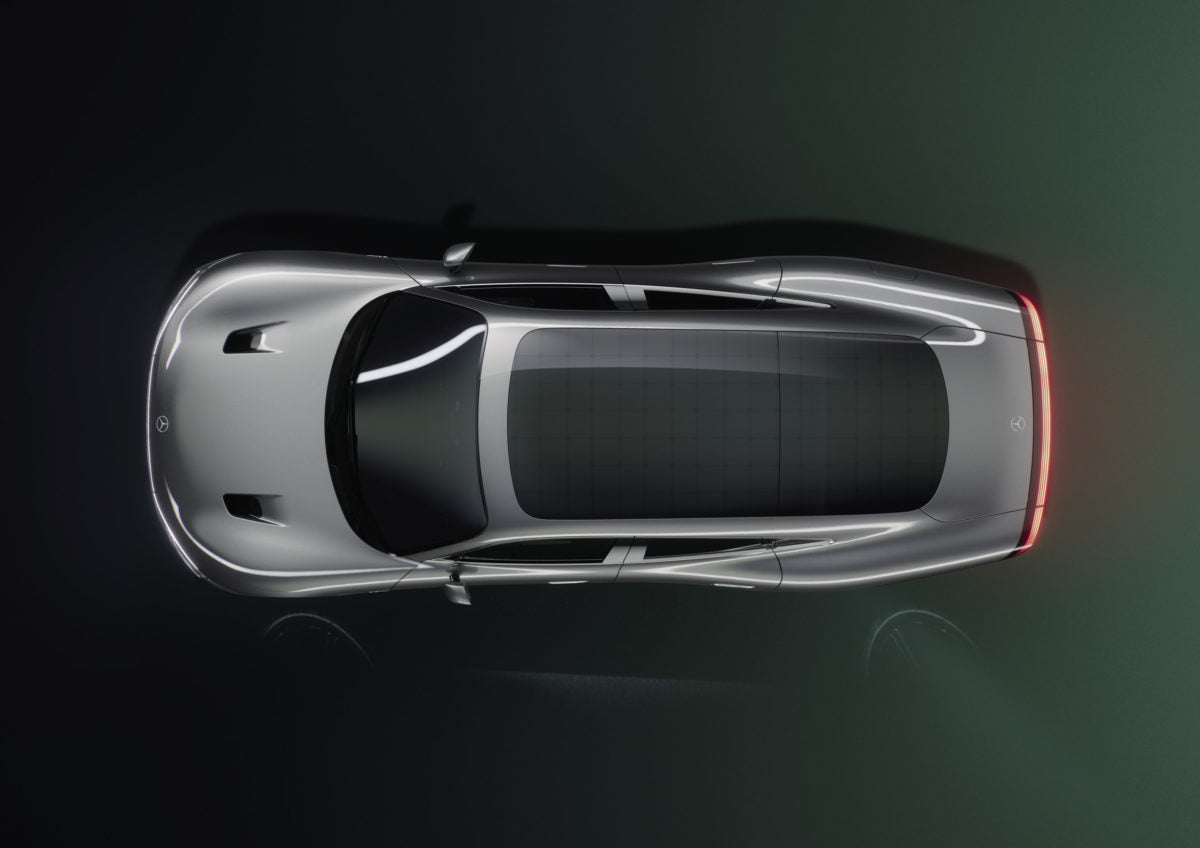https://www.pv-magazine.com/2024/05/01/new-approach-shows-how-to-power-homes-eclusively-with-hydrogen-solar-and-batteries/
New model shows how to power homes exclusively with hydrogen, solar, batteries

Schematic of the system
Image: pv magazine
A group of researchers from the University of Cantabria in Spain has conducted a pilot project for a self-sufficient home that runs exclusively on photovoltaics, batteries, and hydrogen storage.
“This plant combines PV panels and hydrogen (PVHyP) as a method of seasonal energy storage, achieving the ambitious target of accomplishing an electrically self-sufficient social housing unit throughout the year,” the group said. “To achieve this goal, a tailor-made energy management strategy (EMS) has been developed based on the state of charge of the battery pack and the energy flow within the PVHyP, ensuring that the electrical consumption of the home is always covered either through PV panels, fuel cell or battery pack.”
For their simulation, the scientists collected data from January 2022 to December 2023 for an 80 m2 social home that is located in Novales, a small village in northern Spain. Electricity bills from the years before the renewable electrification of the house showed that it consumed 2,513 kWh/year with an average daily consumption of 6.88 kWh. The average consumption in the winter and fall was over 7.3 kWh, and in summer, 5.88 kWh/day.
With these data, the scientists moved to size the energy system using software optimization and market analysis. Finally, they settled on 20 solar panels with a power of 40 W each placed on the roof, as well as four 2.4 kWh batteries. The rest of the plant was installed in a shed in the neighboring plot. That included a 35 L water tank that used tap water after purification for electrolysis and a 600 L hydrogen storage tank at 300 bar.
With the proposed system configuration, the PV panels first must supply the house load. The excess generation will then charge the battery, and once that is full, it is stored in a high-pressure storage tank in the form of hydrogen generated by an electrolyzer.
Popular content
“When the solar irradiation is insufficient to cover the demand of the house, the batteries supply the necessary energy to the dwelling,” explained the academics. “If the batteries are discharged, the fuel cell generates electricity to charge the batteries from the stored hydrogen. As far as possible, the hydrogen stored in the buffer is used first to avoid the compression stage, thus increasing energy efficiency. The system and the house are connected to the grid on a self-consumption basis to sell back to the grid all the excess energy.”
According to the research group, the house demonstrated self-sufficiency, and its LCOE decreased from €0.86($0.92)/kWh to €0.34 /kWh, and the tenants saved €1,170 annually. “Almost 15,200 kWh have been saved from fossil fuels, which corresponds to approximately 2,260 kg of CO2,” emphasized the researchers.
They presented their findings in the study “Sustainable and self-sufficient social home through a combined PV‑hydrogen pilot,” published in Applied Energy.
This content is protected by copyright and may not be reused. If you want to cooperate with us and would like to reuse some of our content, please contact: editors@pv-magazine.com.



